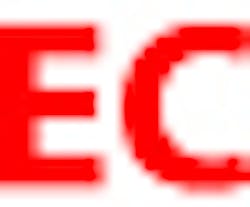Working Together Helps Strengthen Erosion Control Groups in Alabama
There are many ways for a professional organization to attract new members. In Alabama, three groups of professionals who share a common interest in protecting natural resources have done just that by joining forces to help each other enhance the knowledge and skills of their own members.
As a result of this cooperative approach, each group-the Alabama Chapter of the Soil and Water Conservation Society (SWCS), the state’s EnviroCert International Inc. registrants, and the Southeast Chapter of the International Erosion Control Association (IECA)-enjoys more and better professional development opportunities than they would otherwise, say leaders.
EnviroCert International Inc., which includes three separate entities-CPESC Inc.; CPSWQ Inc.; and CESSWI Inc.-certifies professionals around the world in the areas of erosion and sediment control, stormwater management, and inspection of erosion and sediment control practices, respectively. SWCS is a nonprofit international scientific and educational organization that serves as an advocate for conservation professionals and for science-based conservation practices, programs, and policies. The IECA is the world’s oldest and largest association devoted to helping members solve the problems caused by erosion and its byproduct-sediment.
By cooperating to provide continuing education opportunities in Alabama, SWCS members, Certified Professionals in Erosion and Sediment Control (CPESCs), and others are exposed to new ideas, techniques, and perspectives. At the same time, this arrangement has helped minimize expenses in attending training courses, workshops, and field trips.
“This relationship has helped the Alabama Chapter of SWCS improve the quality of its programs and attract new members,” says Perry Oakes, president-elect of the Alabama SWCS Chapter and state conservation engineer with the Natural Resources Conservation Service. “We’ve had a strong professional development program for years,” he says. “By including CPESC training in our annual meetings, we’re helping our members who are CPESC registrants get the professional development hours required to maintain their certification.”
“Combining the CPESC activities with our annual meetings also allows members of each group to expand their networks of professional contacts,” adds Earl Norton, CPESC, a member of the Alabama SWCS Chapter and SWCS liaison to the CPESC Council of EnviroCert International Inc.
Forming the Alliance
This cooperation dates back to the 1995 annual meeting of the Alabama SWCS Chapter when Norton presented an informal half-day tutorial to help CPESC applicants prepare for the written exam. The session was offered the day before the meeting began and was attended by seven people. Later, four of the seven participants successfully completed the exam.
At the time of the tutorial, Alabama had four CPESC registrants. During that 1995 meeting, the state SWCS chapter established a CPESC Committee and began focused support for CPESCs. The CPESC tutorial was offered again just before the Chapter’s 1996 meeting along with continuing education, which included presentations about stormwater regulations and a field trip to view erosion and sediment control practices at several construction sites. The exam was provided at the end of the annual meeting. About 20 people attended the field trip and about 10 started the exam process.
“It was this year that the Chapter realized that opportunities were knocking,” says Norton.
These CPESC tutorials, continuing education sessions about stormwater management requirements and practices, and presentation of the exam continued for the next four annual meetings of the Alabama SWCS Chapter. In 2001, the Chapter replaced the tutorial with a formal CPESC exam review course the day before the annual meeting and added the exam the day after the annual meeting.
In 2003, the CPESC exam review course and exam were separated from the Chapter’s annual meeting and offered two times a year at a central location in the state.
Mutual Benefits
What started as a way to provide training for CPESC registrants and applicants has helped the Alabama SWCS Chapter grow by attracting new members from other groups of erosion control professionals, including the Alabama Department of Transportation and the Alabama Department of Environmental Management.
“It’s also worked the other way,” Norton adds. “Professionals in the erosion and sediment control industry need continuing education. CPESC and other related training that the Alabama Chapter of SWCS offers helps them meet these requirements. It also offers new networking opportunities for members of each group. For example, some of our Chapter members have joined the IECA after learning about it from other members who attend our annual meetings and vice versa.”
Another very important aspect of these connections has been the positive relationship that evolved between the Alabama SWCS Chapter and the IECA Southeast Chapter.
The Alabama SWCS Chapter has also benefited from a more diverse membership. “A few years ago, most of our members worked with the USDA’s Natural Resources Conservation Service,” says Oakes. “Now, our members also include the public department of transportation, environmental management and fish and wildlife people, as well as private professionals and members of environmental groups.”
“As a result, unlike some SWCS chapters which have lost members, our Alabama Chapter has held membership steady in some years and increased it in others,” adds Norton.
In fact, one of Norton’s goals as the national SWCS liaison to the CPESC Council of EnviroCert International is to work with other SWCS chapters to include CPESC program support to their activities. Also, he wants other SWCS chapters to build stronger relationships with IECA chapters.
“SWCS chapters, CPESCs, and IECA Chapters share so many common interests,” Norton says. “By working together, each group can get so much more done.”


